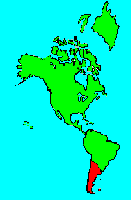SPECIES INFO
Argentina boa (Boa constrictor occidentalis = Constrictor occidentalis) is found in Argentina and southern Bolivia.Constrictor genus either contains a single species or perhaps this species should be moved into the Boa genus. Some experts divide the New World Boa constrictor into several species.
Boas (Family Boidae) are closely related to the Pythons, and also kill their prey by constriction. Some of the largest snakes in the world are in this family. The Boa genus (including the Boa constrictor = Constrictor constrictor) and the Eunectes genus (Anacondas) both belong here. These primitive snakes generally give birth to live young. There are about 36 species in this family spread into 7 genera with representatives in both the Old and New World.
Lizards and Snakes (Squamata Order) share many common characteristics and consequently they are grouped in a single order. There are greater differences between some groups of lizards than there are between other groups of lizards and snakes. The same is true of snakes. Lizards and snakes share a common skull shape.
There are perhaps 4,000 species of lizards and perhaps 2,700 species of snakes alive today. In the Great Big Book of Snakes and Reptiles published in 2014, they noted the above estimates.
Reptiles (Class Reptilia) are an ancient group of scaled chordates. These scales may be permanently joined, as in the turtles, or flexible, as in the snakes. Reptiles are land-based. Their eggs are laid on land and the young are air breathing.
In the Great Big Book of Snakes and Reptiles published in 2014, they noted that there are more than 7,000 species of reptiles alive today.
Backboned Animals (Phylum Chordata) are the most advanced group of animals on earth. These animals are characterized by having a spinal cord or backbone. Most members have a clearly defined brain that controls the organism through a spinal cord. Fish, amphibians, reptiles, birds, and mammals are in this phylum.
Currently, some taxonomists believe that the fish should be divided into two groups (sharks and regular fishes) and that there are some other primitive groups in the phylum such as hagfish or lampreys.
Animal Kingdom contains numerous organisms that feed on other animals or plants. Included in the animal kingdom are the lower marine invertebrates such as sponges and corals, the jointed legged animals such as insects and spiders, and the backboned animals such as fish, amphibians, reptiles, birds, and mammals.


